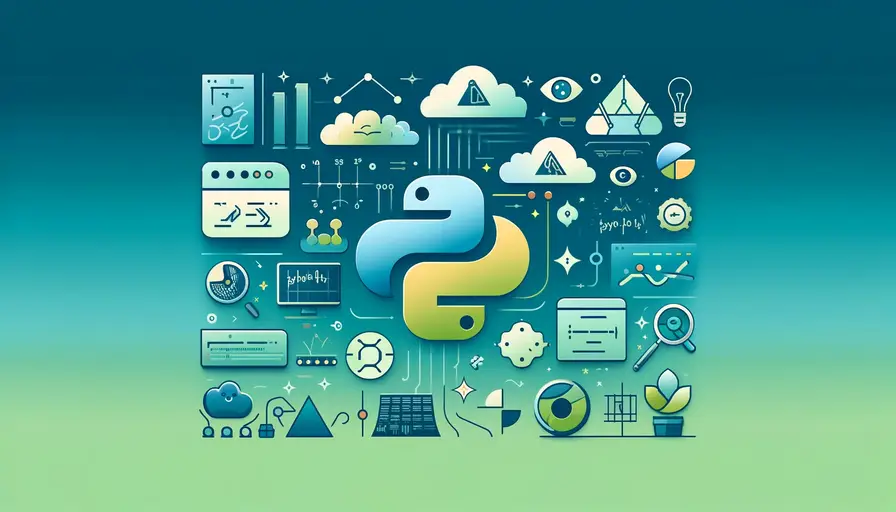
Creating an Image Dataset for Machine Learning: A Python Guide

Web Scraping for Image Collection
Identify Target Websites
Before starting with web scraping, identify websites that host images relevant to your machine learning task. Look for sites with clear, structured HTML where images are easily accessible.
Install Necessary Libraries
To scrape images, you need libraries such as BeautifulSoup and requests. Install these using pip:
pip install beautifulsoup4 requestsThese tools will help you retrieve and parse HTML content.
Retrieve HTML Content
Use the requests library to fetch the HTML content of the target webpage. This content will be parsed to extract image URLs.
Guide: Choosing the Best Machine Learning Model for Predictionimport requests
url = 'http://example.com'
response = requests.get(url)
html_content = response.contentParse HTML and Extract Image URLs
Parse the retrieved HTML content using BeautifulSoup to locate and extract image URLs.
from bs4 import BeautifulSoup
soup = BeautifulSoup(html_content, 'html.parser')
images = soup.find_all('img')
image_urls = [img['src'] for img in images]Download Images
Loop through the list of image URLs to download and save the images locally.
import os
os.makedirs('images', exist_ok=True)
for idx, url in enumerate(image_urls):
img_data = requests.get(url).content
with open(f'images/img_{idx}.jpg', 'wb') as handler:
handler.write(img_data)Collect Images from Public Datasets
Identify Relevant Datasets
Public datasets like ImageNet, COCO, and Open Images Dataset are valuable resources. Choose a dataset that matches your machine learning task.
Download the Dataset
Most public datasets provide download links or APIs to fetch images. For instance, ImageNet offers tools to download their data.
Top Websites for Downloading Machine Learning Datasets in CSV FormatPreprocess and Organize Images
After downloading, organize the images into directories based on their labels for easy access during training.
Verify and Label Images
Ensure that all images are correctly labeled and verify their quality. This step is crucial for accurate model training.
Image Augmentation for Diversity
Random Rotation
Apply random rotations to images to increase the variety in your dataset. This can help your model generalize better.
from keras.preprocessing.image import ImageDataGenerator
datagen = ImageDataGenerator(rotation_range=40)Random Scaling
Scale images randomly to create variations in size, which can help the model handle different scales of objects.
Can Machine Learning Improve Flight Delay Predictions?datagen = ImageDataGenerator(zoom_range=0.2)Random Flipping
Flip images horizontally and vertically to create mirror images, adding more diversity to the dataset.
datagen = ImageDataGenerator(horizontal_flip=True, vertical_flip=True)Labeling Images
Manual Labeling
Label images manually if you have a small dataset. This method is time-consuming but ensures high accuracy.
Semi-Automatic Labeling
Use tools that combine automation and human oversight to label large datasets more efficiently.
Crowdsourcing
Leverage platforms like Amazon Mechanical Turk to distribute the labeling task among many people.
Innovative Project Ideas for Data Mining and Machine LearningSplitting the Dataset
Training, Validation, and Testing Sets
Divide your dataset into three parts: training (70%), validation (15%), and testing (15%). This ensures that your model is trained, validated, and tested on different subsets.
from sklearn.model_selection import train_test_split
train, test = train_test_split(data, test_size=0.15)
train, val = train_test_split(train, test_size=0.15)Resize and Normalize Images
Consistency and Performance
Resize all images to a standard size and normalize pixel values to a range of 0 to 1 for consistent input into the machine learning model.
from keras.preprocessing.image import img_to_array, load_img
img = load_img('image.jpg', target_size=(224, 224))
img = img_to_array(img) / 255.0Save Dataset in Compatible Format
Choosing the Right Format
Save your dataset in formats such as TFRecord for TensorFlow or HDF5 for Keras, which are optimized for efficient loading and training.
Organizing the Dataset
Ensure that the dataset is well-organized, with a clear directory structure and naming conventions for easy access.
Deploying a Machine Learning Model as a REST APIDocument the Dataset Creation Process
Create a Step-by-Step Guide
Document each step of your dataset creation process to ensure reproducibility and clarity.
1. Data Collection: Describe the sources and methods used to collect images.
2. Data Preprocessing: Detail how images were resized, normalized, and augmented.
3. Data Annotation: Explain the labeling process.
4. Data Splitting: Outline how the dataset was divided into training, validation, and testing sets.
5. Include code snippets for each step.Include Code Snippets
Provide clear and concise code examples for each step of the process, enabling others to replicate your work.
# Example for resizing and normalizing images
from keras.preprocessing.image import img_to_array, load_img
def preprocess_image(file_path):
img = load_img(file_path, target_size=(224, 224))
img = img_to_array(img) / 255.0
return imgExplain Data Collection Methodology
Detail the methodologies used to collect and verify images, ensuring transparency and accuracy.
Regularly Update and Maintain the Dataset
Keep It Relevant and Accurate
Regularly update your dataset with new images to keep it current and relevant to evolving machine learning tasks.
Enhancing Radar Detection Accuracy with Machine LearningDocumentation Updates
Keep the documentation up-to-date with any changes in the dataset or methodology to maintain accuracy and usability.
By following these detailed steps, you can create a robust and diverse image dataset for your machine learning projects using Python. This guide ensures that your dataset is well-organized, properly labeled, and suitable for training high-performing models.
If you want to read more articles similar to Creating an Image Dataset for Machine Learning: A Python Guide, you can visit the Applications category.



You Must Read